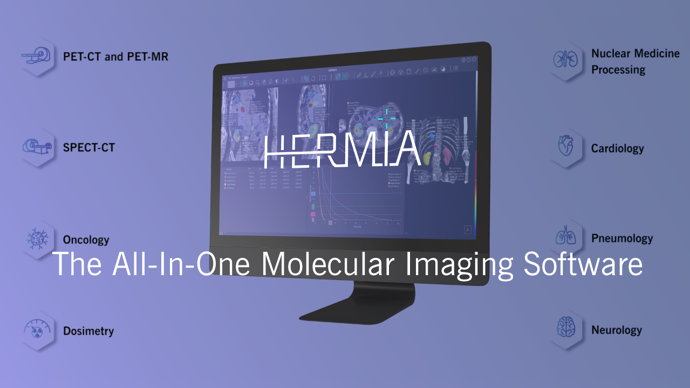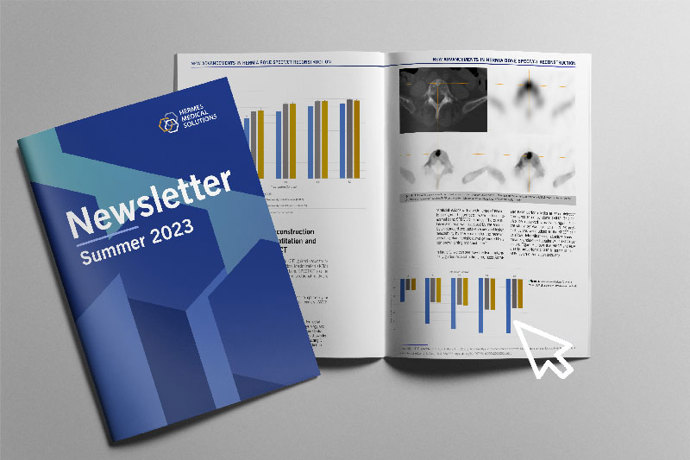Your hub to the latest Knowledge in Nuclear Medicine/Molecular Imaging
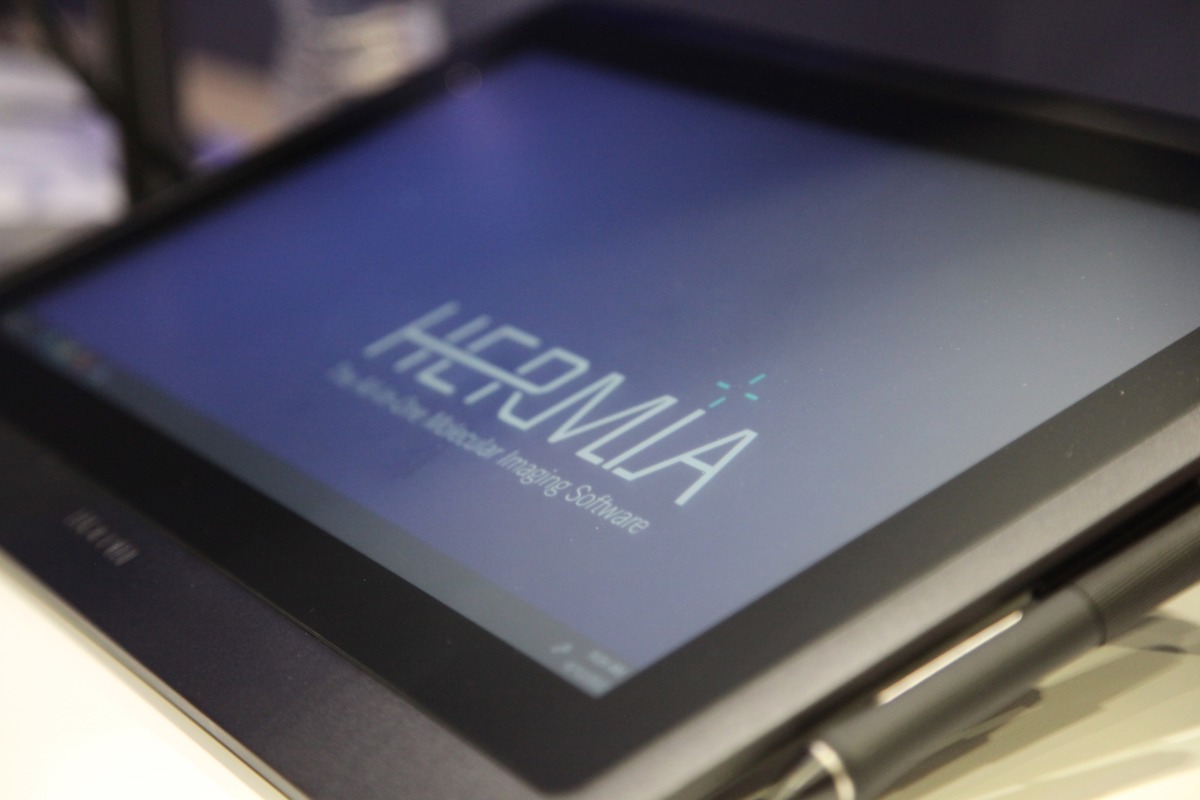
Press releases
Hermes Medical Solutions enhances Hermia software with Centiloid scale for advanced brain imaging
Hermes Medical Solutions (HMS), a global leader in molecular imaging and dosimetry software, announces the latest CE-marked release* of its flagship platform, Hermia, featuring new capabilities designed to elevate precision, standardization, and efficiency in nuclear medicine.
Hermes Medical Solutions unveils new Hermia release
Hermes Medical Solutions (HMS), a global leader in molecular imaging and dosimetry software solutions, proudly announces the latest updates within Hermia, including new CE marked functionalities*, designed to advance precision and efficiency in nuclear medicine imaging and dosimetry.
Hermes Medical Solutions joins FNIH Biomarkers Consortium's Project to advance cancer treatments
Hermes Medical Solutions is proud to announce its participation in the Foundation for the National Institutes of Health (FNIH) Biomarkers Consortium’s groundbreaking Precision Dosimetry Imaging Biomarker (PDIB) project. This ambitious international initiative seeks to transform radiopharmaceutical therapy (RPT) through improved dosimetry, leading to more effective and personalized cancer treatments.
Scientific publications
Biodistribution and dosimetry of [Lu-177]Lu‐SibuDAB in patients with metastatic castration‐resistant prostate cancer
Several prostate-specific membrane antigen (PSMA) radiopharmaceuticals have been used for the treatment of metastatic, castration-resistant prostate cancer (mCRPC). In an attempt to improve the tumour accumulation, new PSMA ligands were developed with an albumin-binding entity to enhance the blood circulation and, hence, tumour accumulation. In preclinical studies, [Lu-177]Lu-SibuDAB, a radiopharmaceutical with moderate albumin-binding properties, outperformed [177Lu]Lu-PSMA-617 and [Lu-177]Lu-PSMA-I&T. The aim of this study was to evaluate the dosimetry of [Lu-177]Lu-SibuDAB in patients diagnosed mCRPC.
Bone marrow dosimetry in low volume mHSPC patients receiving Lu-177-PSMA therapy using SPECT/CT
Bone marrow toxicity in advanced prostate cancer patients who receive [Lu-177]Lu-PSMA-617 is a well-known concern. In early stage patients; e.g. low volume metastatic hormone sensitive prostate cancer (mHSPC) patients, prevention of late bone marrow toxicity is even more crucial due to longer life expectancy. To date, bone marrow dosimetry is primarily performed using blood sampling. This method is time consuming and does not account for possible active bone marrow uptake. Therefore other methodologies are investigated. We calculated the bone marrow absorbed dose for [Lu-177]Lu-PSMA-617 in mHSPC patients using SPECT/CT imaging and compared it to the blood sampling method as reference.
Internal dosimetry study of [Rb-82]Cl using a long axial field-of-view PET/CT
Our study suggests that the radiation dose associated with [Rb-82]Cl PET/CT can be assessed by means of dynamic LAFOV PET and that it is lower compared to literature values.
Brochures
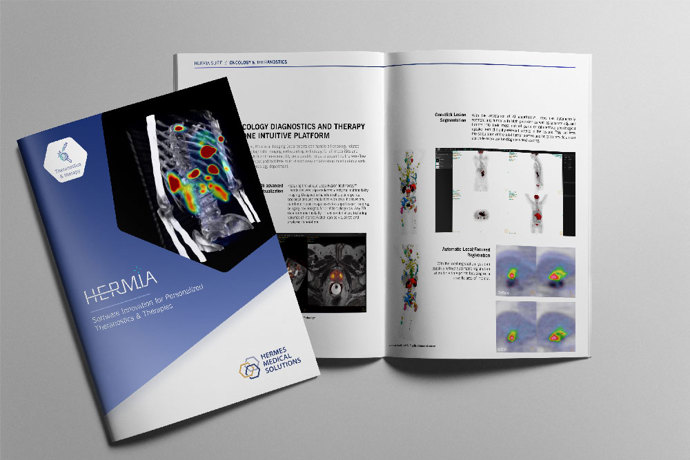
Theranostics Brochure
Brochure dedicated to the advanced tools for Theranostics and Therapies within the Hermia software.
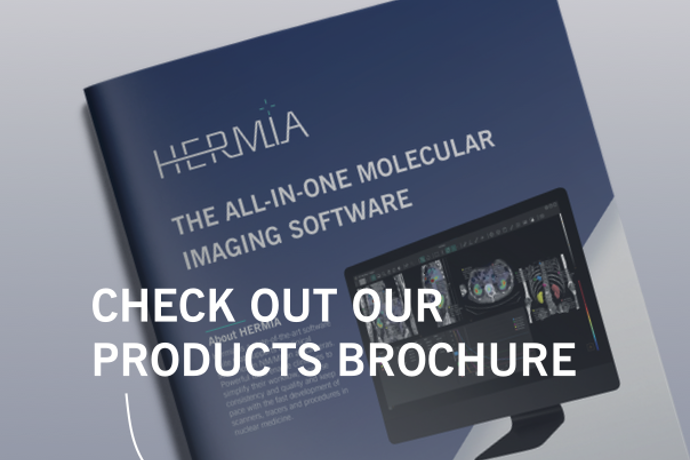
Hermia product overview
Product overview of Hermia, a state-of-the-art software suite that supports all clinical scenarios in NM/MI on all cameras.
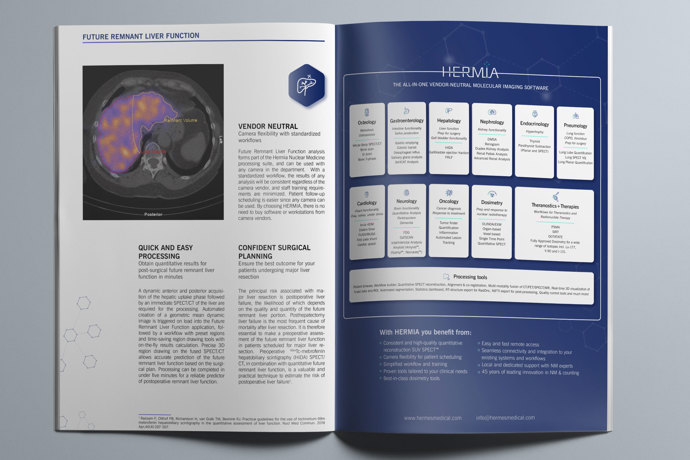
Future Liver Remnant Function
Ensure the best outcome for your patients undergoing major liver resection
White papers
Hermia SPECT Reconstruction
The quality of SPECT imaging is reduced by photon attenuation, resolution loss due to collimator-detector blur, photon scatter, and noise. All these factors limit both the visual quality and quantitative power of SPECT images. Hermia SPECT Reconstruction provides methods to compensate for the effects of the aforementioned four factors by modelling them in iterative reconstruction.
Hermia Advanced Bone SPECT Reconstruction
Our easy-to-use software enables precise determination of reconstruction parameters, and we are proud to be able to offer two Bayesian reconstruction algorithms to optimise your bone SPECT/CT images: AMAP-Smooth and AMAP-RDP.


